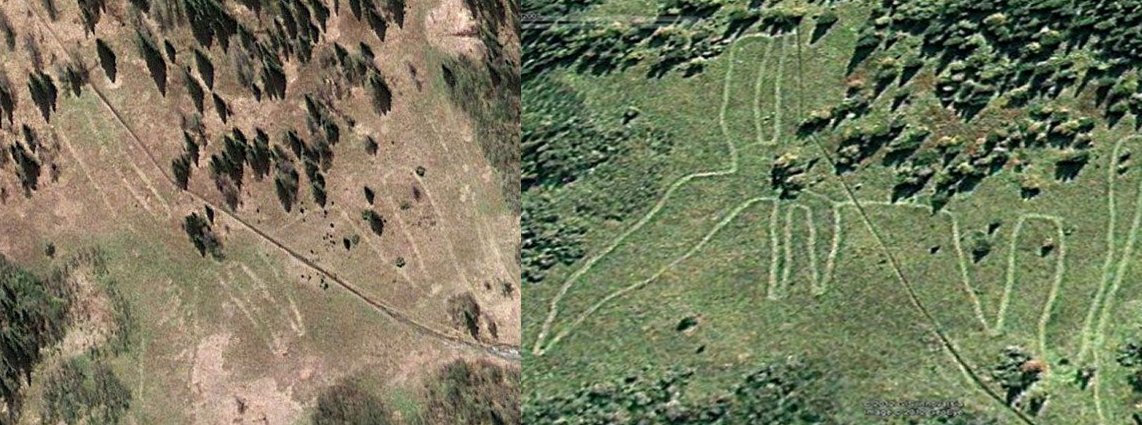Gigantic Ancient Stone Structures Hidden In The Ural Mountains
MessageToEagle.com – When you hear about the Nazca Lines, you tend to think about Peru. Perhaps you also recall the thousands of unknown structures seen from space in the Middle East that we discussed in another of our articles.
As we have said so many times before: Planet Earth is still full of surprises! New, puzzling, thousands of years old giant lines that are only visible from space have been discovered in the Ural Mountains in Russia.

Many years ago, on the W. Siberian plains just east of the Ural mountains,on the rivers Išim and Tobol Russian archaeologists found what could be considered as the earliest attested traces of Aryan culture.
Later, at the site of Potapovka, scientists came across a unique burial. It contained a human skeleton whose head had been replaced by a horse head; a human head was found near his feet, along with a bone pipe, and a cow’s head was placed near his knees.
A recent discovery reveals the Ural Mountains are still full of secrets.
Near the Zjuratkul lake in the Ural Mountains north of Kazakhstan there is a huge geoglyph in the shape of an elk or deer.

Researchers estimate that this ancient giant figure is several thousand years older than the Nazca Lines of Peru.
The animal-shaped stone structure was originally discovered by Alexander Shestakov who first spotted it on satellite images.
The entire stone structure is gigantic. Researchers say it stretches for about 900 feet (275 meters) at its farthest points, from northeast to southeast. The size is equivalent to two American football fields.

“The figure would initially have looked white and slightly shiny against the green grass background,” writes Stanislav Grigoriev, of the Russian Academy of Sciences Institute of History & Archaeology, and Nikolai Menshenin, of the State Centre for Monument Protection, in an article first detailing the discovery published last spring in the journal Antiquity. They note that it is now covered by a layer of soil.

According to Grigoriev “the hoof is made of small crushed stones and clay.”
Since there are other similar sites in the area, Russian archaeologists believe this enormous stone structure was created by an unknown megalith culture that was present in the Urals thousands of years ago.
MessageToEagle.com










